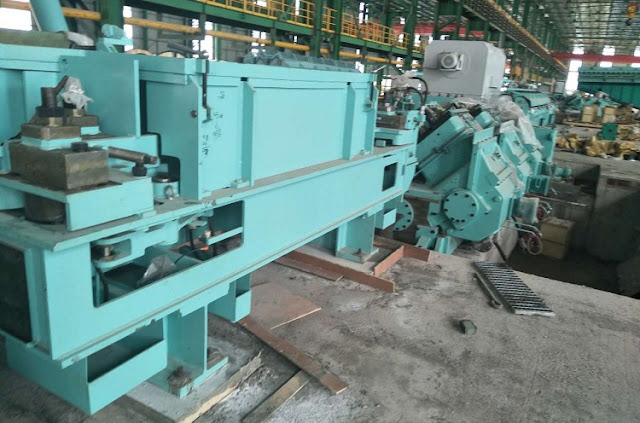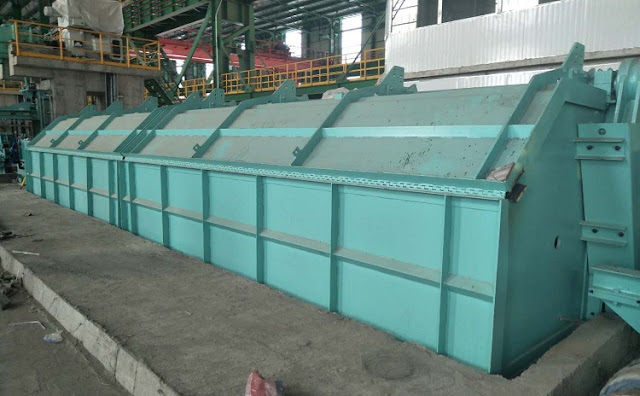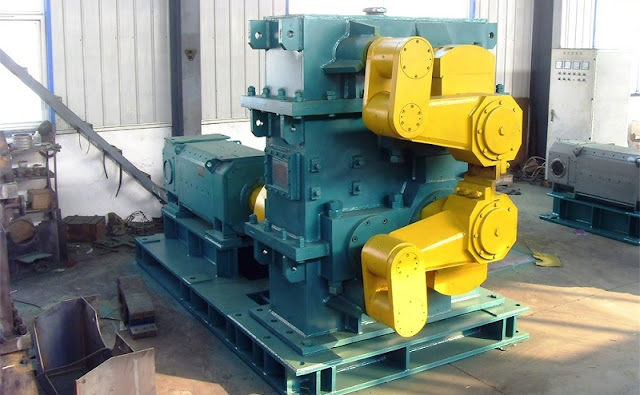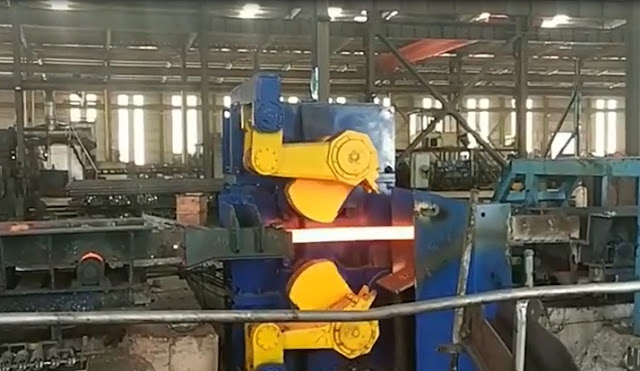 |
SMS No-twist Wire Rod Mill
SMS designed a set of rocker arm type high-speed wire rod mill with adjustable roll gap. There are two types of rolling mills layout. One is similar to Morgan type wire rod mill. The adjacent frames are arranged at 90 degrees and 45 degrees alternately with the horizontal plane. The other is that the adjacent frames are still arranged at 90 degrees, but the other is that the adjacent frames are still arranged at 90 degrees with each other. They are at 15/75 degrees above and below the horizontal plane.
According to rolling different steel grades, SMS Group developed three kinds of wire rod finishing mills:
- High-pressure reduction finishing mill for common steel grades with elongation of 14.5%.
- The elongation of the finishing mill for high-quality steel grades reaches 9.54%.
- The elongation of high-grade alloy steel can reach 6.93% in the finishing mill.
The three types of finishing mills have the same basic design, but the reduction rate of each stand is different. So the speed distribution is different. The low reduction rate is used for rolling high deformation resistance steel, while a very high reduction rate can be used for finishing mill when rolling common carbon steel. SMS finishing mill can roll threaded steel bars with diameters of 5.5-16 mm and 6-14 mm, in addition to wire rods with diameters of 5.5-16 mm. The unit has the following characteristics:
The structure of all stand of wire rod finishing mill is the same, so it can be interchanged, and the spare stand can be reduced, which reduces the investment accordingly.
The diameter of the roll ring is standard 210mm. Compared with other roll rings with smaller diameter, it can reduce the rotational speed of the driving system and improve the service life of the rolling groove.
With hydraulic quick clamping and loosening device, the roll ring part can be quickly changed, which can ensure the high productivity of the finishing mill.
The roll shaft installed in the rocker arm can adjust the roll gap symmetrically in a wide range, so as to keep the rolling line constant, which is very advantageous for stabilizing the rolling process, reducing production accidents, and improving the mill operation rate.
The rocker arm mechanism is used to increase the cross-section coefficient of the roller bearing, improve the stiffness and strength of the rolling mill, thus improving the precision of the product and the rolling force of the finishing mill.
The driving system does not use a coupling to prevent vibration.
Compared with the standard roll ring, the life of the tungsten carbide roll ring groove is increased from 400 tons/mm diameter to 900-1000 tons/mm diameter, and the time interval of roll ring replacement is greatly increased.
Please contact stella@hanrm.com for a quotation.
And free send inquiry to us.
Whatsapp/Wechat:+8615877652925
More News You May Interesting:
Finishing Rolling Mill Process Explanation
Reasons and Solutions for the Piling of Wire Rod Rolling
Characteristics and Quality of Wire Rod
Morgan Wire Rod Mill
Why does the Steel Bar Bend after being Cut by Flying Shear?
Headless Welding Rolling Process
Bar Rolling Mills Water Cooling Technology
How to Improve the Thermal Efficiency of the Reheating Furnaces?
Causes of Surface Cracks in High-Speed Wire Rod Rolling Mill
What is Slit Rolling?
Failure Analysis of Cold Mill Roll
Causes and Solution of Steel Piling-up in High-speed Wire Rod Rolling Mills?
Bar Automatic Counting System
Rolling Mill Pass Design

























